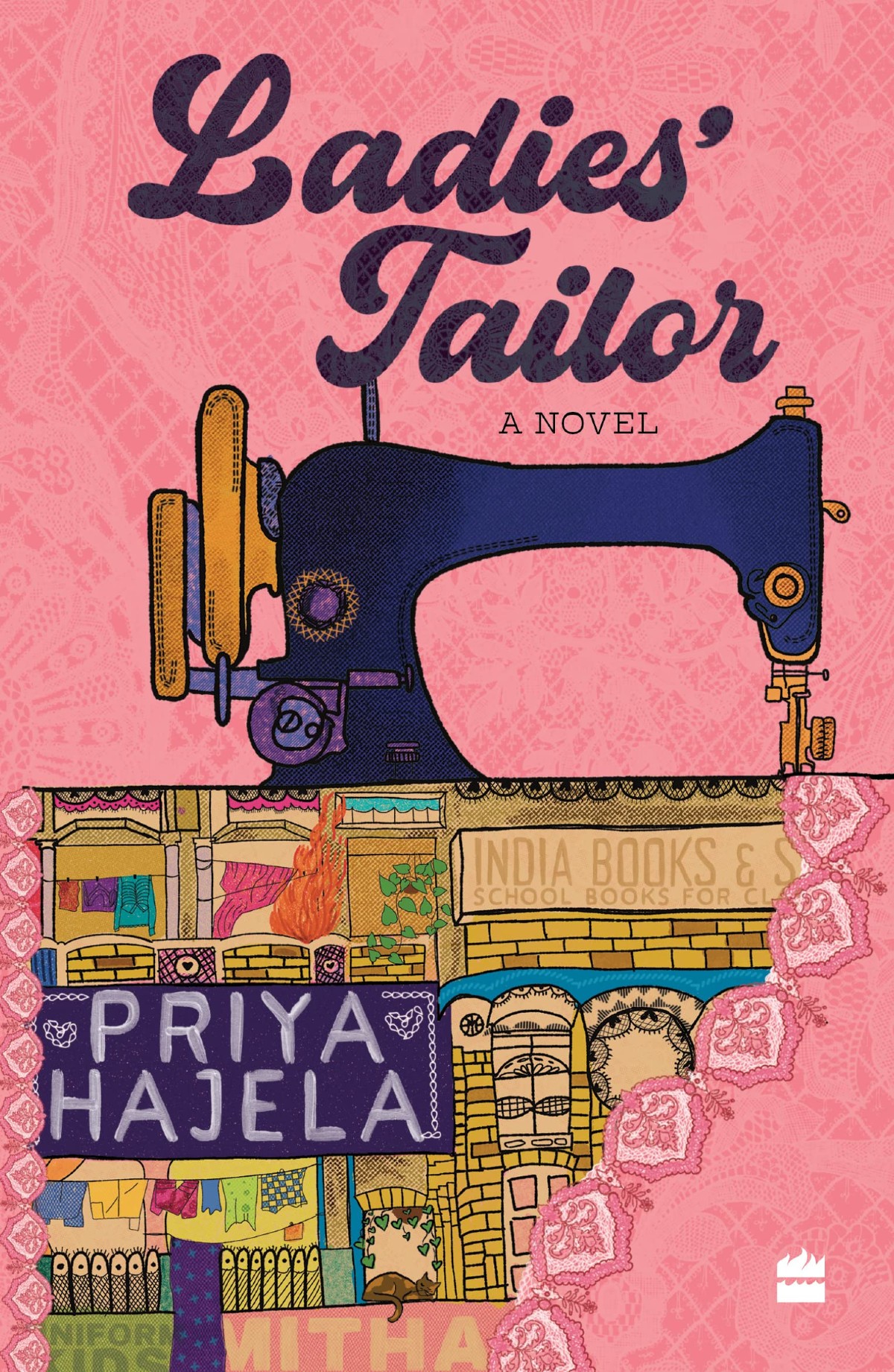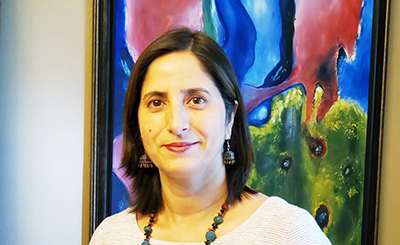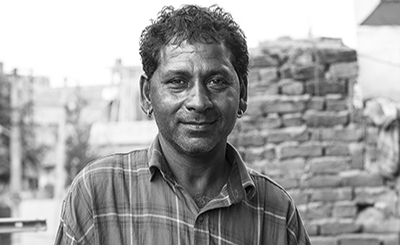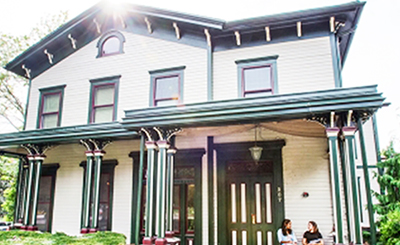
Priya Hajela, author of Ladies’ Tailor. Photos courtesy of the author
‘There is a lot written about Partition, but not as much about what happened a few years after — the remaking of lives, the uprooted replanted and overcoming the trauma of loss’
Pune-based fiction writer Priya Hajela’s debut novel, Ladies’ Tailor (HarperCollins India), is woven around a clutch of refugees, led by a man called Gurdev, who travel east from Pakistan after Partition. Even as things fall apart on his personal front — his wife and children leave him — hope floats at the work front as he embarks on new business: making garments for ladies. Hajela, an MBA from Vanderbilt University (1992) and an MFA in Creative Writing from Goddard College in Vermont (2017), has earlier worked in telecom and IT sector in senior marketing and business development roles for over two decades. Excerpts from an interview:
How did you decide upon the subject of the novel? Did you always have Partition as the central theme for your debut novel in the back of your mind? Or did you want to tell a story of perseverance, friendship and love, and Partition came into the picture later?
I wanted to tell a story of perseverance, rebuilding, and recovering life. I needed a tumultuous backdrop, one that would test anyone in so many ways, one that no one could control or influence, once the fire had been lit. Partition provided all that and more. For one thing, it was personal. For another, the reverberations of Partition affect our two countries till today.
While preparing yourself for the novel, did you find yourself going back to the vast repository of Partition literature? If so, were there elements — in terms of language, imagery and symbolism, etc — you wanted to come through in Ladies’ Tailor as well? What are some of the Partition texts you’d suggest our readers get their hands on?
I did go back into the repository of Partition Literature, but I also dug back into my own life. Starched vs. unstarched turbans, how turbans were tied, how different people wore their beards, the neatly combed netted version vs. the bobby pin version, vs. the unkempt, loose version — all this came from my own experiences. Also, the language which I have heard since I was a child but never spoken and never realised how much I had imbibed. I literally translated some of the dialogue from Punjabi to English — the Punjabi that I had heard spoken around me as I was growing up.
I highly recommend Nisid Hajari’s Midnight’s Furies and Bapsi Sidhwa’s Ice Candy Man as good Partition reading.
What kind of research went into ensuring the historical correctness of this novel, did the genre of historical fiction pose any peculiar difficulties? Was treading the fine balance in weaving a fictional story around the Partition and yet ensuring that the seriousness of the matter wasn’t once trivialized, daunting at any point?
I read as much as I could, both fiction and non-fiction. There is a lot written about Partition proper but not as much about what happened a few years after — the remaking of lives, the uprooted replanted and overcoming the trauma of loss. I wanted to learn about the historic elements but didn’t want the writing of others to influence my language, imagery and so on. I wanted that to be as much my own as I could gather up after reading the basics about the time. For example, the scenes in the train when Gurdev shoves his family in and rides on top of the train — those visuals are everywhere but what actually happened came out of my head. Same with the scenes when Gurdev and his family went to the very front of the kafila and woke up early as the sun rose, to begin walking. I knew that kafilas were being attacked along the way — but I didn’t know that they were being attacked in the middle. I deduced that from a rudimentary understanding of human nature.
My intent was to stay true to the time in terms of dates of major events, and the general backdrop of Partition. However, what I have written isn’t historical fiction. It is a story about a group of people who survived and later thrived in a very difficult time in India’s history. In that, I tried to stay as attuned to the suffering as I possibly could.
What made you let Simrat’s character go in the direction that it does — abrupt and wholly unexpected?
I had to have something happen to Simrat. She couldn’t go on the way she was. And whatever happened to her had to be instant. I had considered letting her bleed out on the operating table. I had even planned her funeral. But that wouldn’t have allowed me to take Gurdev’s character where I wanted to. He would have been the sad widower. I needed him to be as stunned as the reader. I needed him to reform. Hence Simrat’s quick and decisive action.
The book transitions from being a tale of Partition migration to an adventurous cross border rescue mission story. Was this change in the tenor of the book pre-planned or did it acquire its present form gradually as you went about writing the novel?
I had not intended the book to simply be about Partition migration. It had to go further; the characters needed to reestablish themselves. I had thought about the return to Pakistan for Gurdev — to reckon with his past. The rest of the story unfolded as I wrote it. While Ladies’ Tailor spans several years, the buildup to travel to Pakistan, complete the mission and return all happens over a few months. By this time in the book, I’ve introduced all the characters, Gurdev’s misdeeds have been alluded to and the book takes on a rapid pace that should keep the reader turning pages. It is an ode to the spy novels and legal thrillers that are my guilty pleasure.

Ladies’ Tailor, by Priya Hajela, HarperCollins India, pp. 304, Rs 399
Noor’s character is particularly intriguing given that she’s a widow, yet she lives alone in a different house and is a social activist. Even though she hails from an educated and elite background in Delhi, the way she exercises agency is almost unbelievable for the time period the novel is set in. Is her character inspired from some real life figure?
I considered both the characters of Simrat and Noor very carefully. I knew that there would be questions about the choices the two of them make given the time. But I know there were spirited women in that time and two of them found their way into my book. The two were very different yet both stood up for themselves, countering what was expected of them. Noor is not based on any real-life figure. She is just someone who I thought needed to exist to reach Gurdev in a way no woman had reached him before. She had to be strong and smart and patient and slightly devious.
Gurdev ends up setting a home, with children in it, on fire — something he laments and says will always weigh on him. Yet, we don’t find any overt depictions of the kind of trauma an act like this can lead to. Is this explored in the novel in some more nuanced manner, or does the very lack of it refer to the kind of mind-numbing frenzy the Partition violence led to?
My intent with that action on Gurdev’s part was precisely to represent the craziness that ensued following Partition. Gurdev was an educated, measured man who liked to plan everything. Yet he gave in to this base desire for revenge, a burning need to get a tooth for a tooth — despite his strained relationship with his parents. He reflected on his actions from time to time but also discounted his behavior somewhat by attributing it to the fire that the British rulers had set, that no one could control.
The details like the specific kind of turbans worn by people depending on class-based hierarchy, and the colourful depictions of how the patialas worn by women in Lahore is different from how it’s in Delhi, add cultural nuance to the novel. How did you research these sartorial details?
Honestly, I did not. Some of these things I just knew. Not because I’m a fashionista of any measure but just because I had heard conversations about these things when I was growing up. I confirmed some of the fashions from photographs from the time, just to make sure that I was on the right track.
You’ve already established the patriarchal attitude of Gurdev in the early parts of the novel vis-à-vis his relationship with Simrat. After the incident with Simrat, he ruminates upon what might have gone wrong instead of going brash with anger given the betrayal, which does add more nuance to his character. Yet, how do you think his relationship with Noor is going to turn out, given that Noor is an independent woman?
Gurdev is not just patriarchal, he is inconsiderate and thinks he knows everything. Simrat’s departure brings him down a notch or two. His association with his new partners who he thinks very little of to begin with, levels him off further. His meeting with Jagat and understanding the work the younger man is doing, amazes him. By the time he acknowledges his feelings for Noor to himself, he’s already well on his way to transformation. I’m hoping that when the two of them return to India, they spend some time getting to know each other and understanding each other before they take the next step.

You have published short stories before. How did that experience inform your writing process for the novel?
Writing short stories is great preparation for writing a novel that has a level of urgency and keeps a reader’s attention. Because a short story must immediately grab, hold on to, and carry the reader through to the end, that practice is something I tried to follow in every chapter of Ladies’ Tailor.
You live in Pune but most of the events in the novel take place in Delhi. Even though the events in the novel are set almost 70 years from now, there’s something at the very core of Delhi that makes you feel like you know this Delhi set seventy years apart. What is it that fascinates you about Delhi? Why was it important to have Delhi as the backdrop?
After my parents separated in 1985 and we were sent off to boarding school, my father moved from Ludhiana to Delhi. We spent most of our time with our grandparents in Ludhiana but our time in Delhi was magical. My draw to Delhi is from that time. I’ve never lived in Delhi as an adult, but I continue to be fascinated by it. While Partition refugees settled all over India, Delhi was the hub. I also believe that the most enterprising of refugees went to Delhi. The ones with no relatives knew they would have to stay in camps till they could be settled. Settling in smaller towns was much easier. I wanted these enterprising refugees as my characters, not the ones who had settled for what they had received.
More from The Byword
Comments
*Comments will be moderated











